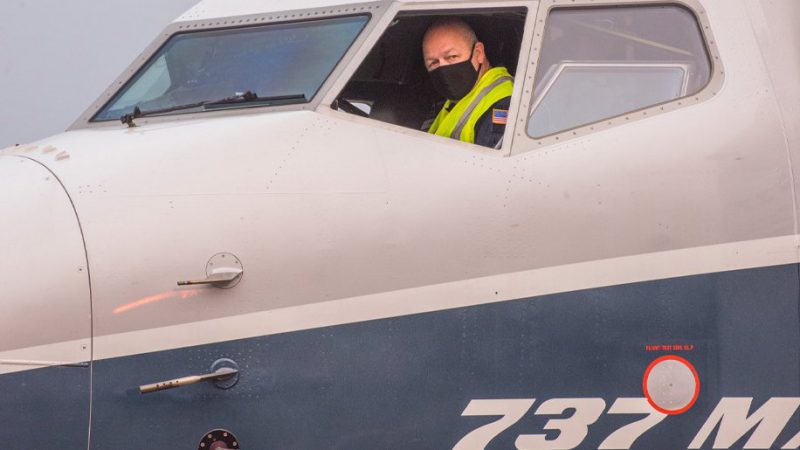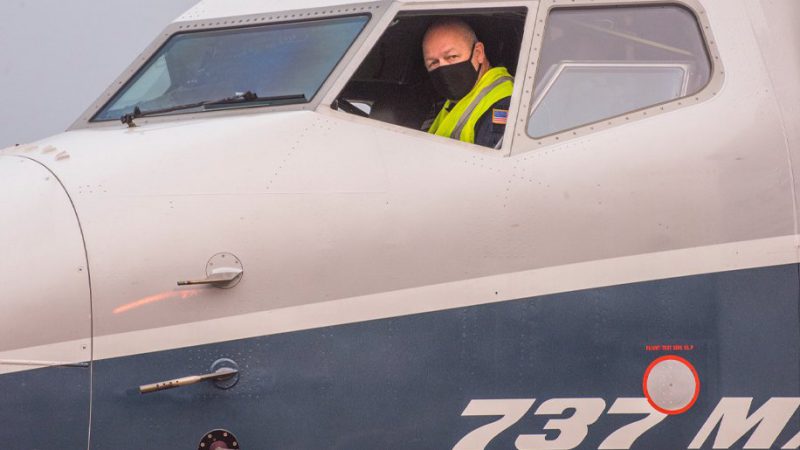FAA Chief Dickson Tests 737 MAX First-hand
“I liked what I saw,” the administrator says, but notes the agency will not rush the recertification process
October 1, 2020

The head of the Federal Aviation Administration Steve Dickson, a former Delta Air Lines pilot, has conducted his own test flight of a Boeing 737 MAX, another step for the regulatory agency to allow the jetliner’s return to regular passenger service.
After he completed new pilot training and spent some time in a 737 MAX simulator, Dickson flew the aircraft through a number of different scenarios to test how the plane responded in crisis situations including “practicing high angle-of-attack patterns and activating the flight control software that went wrong on the MAX crash flights,” according to reports in The Seattle Times.
The aircraft has been grounded since March 2019, after two separate crashes that claimed the lives of 346 people. Both accidents were blamed in part on the aircraft’s Maneuvering Characteristics Augmentation System (MCAS). Input from a malfunctioning sensor caused the MCAS flight control system to mistakenly detect a stall, forcing the nose down and leading to a crash.
After the test flight, Dickson told a news conference, “I completed a number of test profiles today to examine the functionality of the aircraft and I liked what I saw, so it responded well.”
However, Dickson said the agency is still reviewing its technical and test flight data, will not rush the re-certification process.
“We are not to the point yet where we have completed the process,” Dickson said. “The FAA and I in particular will not approve the plane for a return to passenger service until I’m satisfied that we’ve adequately addressed all of the known safety issues that played a role in the tragic loss of 346 lives aboard Lion Air flight 610 and Ethiopian Airlines flight 302.”
Still Boeing is moving ahead with plans to ramp up production of the 737 MAX in anticipation of gaining regulatory approval for the aircraft to return to service.
Some critics, including family members of the victims, called Dickson’s test flight “a PR stunt” and “a gimmick.” These groups are urging the FAA and Boeing to release the technical and test data for analysis by outside aviation experts.
But at the news conference Dickson insisted, “This is not a publicity stunt.” “This is simply the fulfillment of a commitment, a promise I made within my first few weeks at the FAA,” he said.
With outside groups calling for the FAA to share its analysis and data, Dickson responded, “I think we have been transparent to an unprecedented degree. We are providing everything we can within the law,” but he added that “much of the data that I believe is being asked for is proprietary in nature.”
Dickson’s flight comes the same day the Aircraft Certification Reform and Accountability Act passed out of the House Transportation Committee on its way to a vote in the full House. The bipartisan legislation would require significant changes to the aircraft certification process and strengthen the FAA’s oversight, while limiting the role manufacturers would have in certifying their aircraft.
The legislation reflects the findings of a scathing House Transportation and Infrastructure Committee report which revealed the failure of both the FAA and Boeing in the design and evaluation of the 737 MAX. “Boeing failed in its design and development of the MAX, and the FAA failed in its oversight of Boeing and its certification of the aircraft,” the report stated.
Nonetheless, there are indications the MAX could be re-certified by the FAA sometime before the end of 2020, enabling a return to service in early 2021. Last week, the director of the European Union Aviation Safety Agency, Patrick Ky, indicated his agency could approve the 737 MAX for a return to service in November, not long after the FAA lifts its order grounding the plane.




